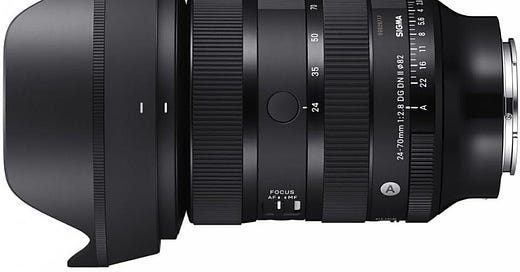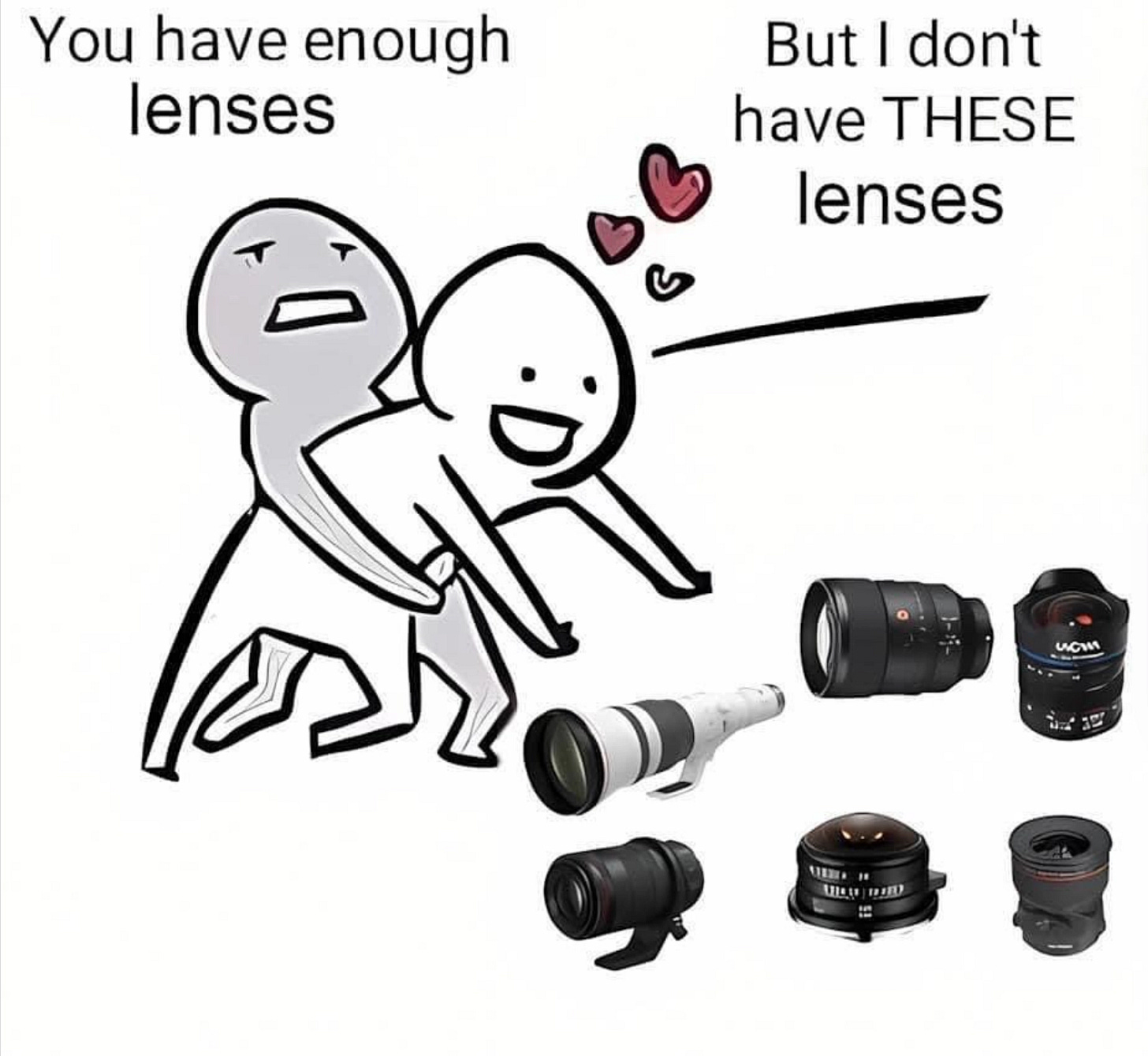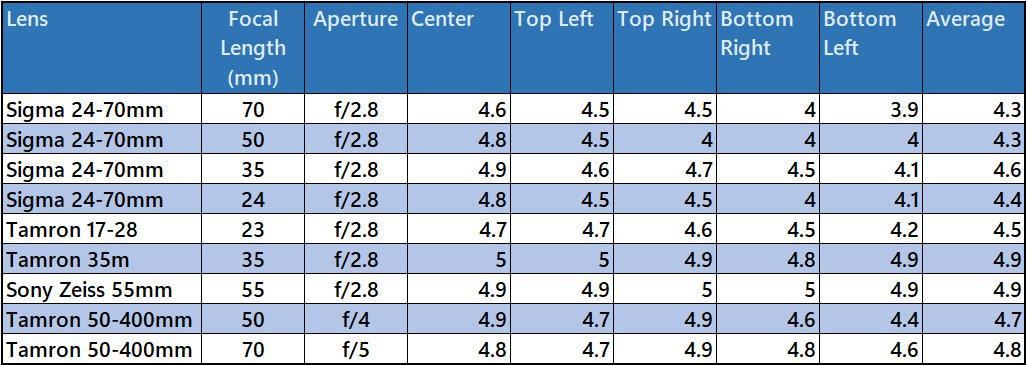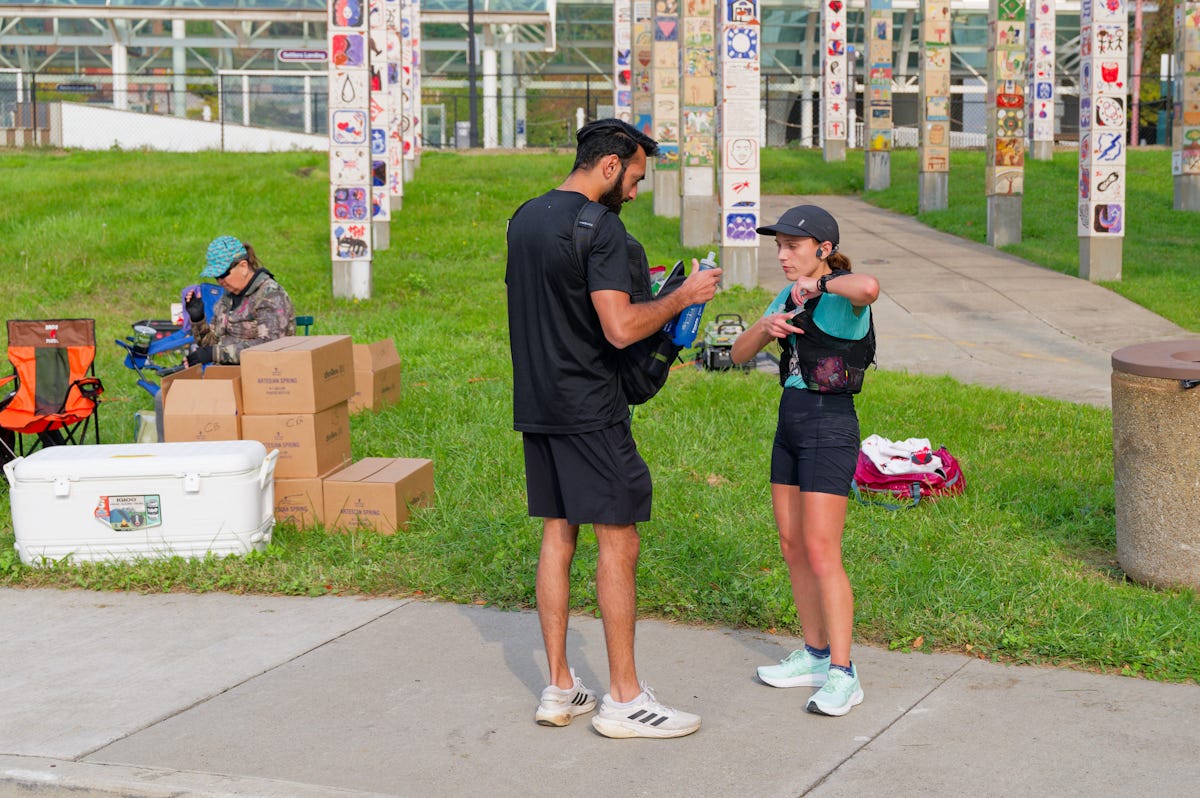The Sigma 24-70mm F2.8 DGDN II ($1,139) lens competes with the Tamron 28-75mm F/2.8 Di III VXD G2 ($899), the Sony FE 24-70mm F2.8 GM II ($2,298) , the older Sony FE 24-70mm F2.8 GM ($1,598) and models from Samyang and Rokinon. As always, native Sony lenses command a premium price over 3rd-party lenses. If you are a pro or have the budget, you should check the Sony models. If you are on a tight budget, then you should look at the cheaper options.
I got the Sigma because it got good reviews and I really like my other two Sigma lenses, the 150-600mm Sports, and the 500mm prime, which replaced it. I didn’t check the other lenses because I already had 4 Tamron lenses and 3 Sony lenses, which is not the most rational way to justify a lens purchase, but who said lens choices had to be rational.
The first thing you notice about the Sigma is that the zoom ring rotates counter-clockwise to zoom in, whereas most other brands rotate clock-wise to zoom. It’s like driving in England or Japan compared to the US or Europe. You can adjust except when you have to make a really quick decision and you turn the wrong way. The other thing you notice is that it is a hefty lens that feels very solid. I shot it for three hours at a race, and it never felt like it was too heavy.
I did a “scientific” test comparing the Sigma with other lenses in my kit bag at matching focal lengths and at f/2.8 or as close as I could get. I shot a book cover using a tripod and a remote trigger. I lined things up by eye, so the book was not going to be perfectly parallel to the front of the lens. I shot inside using available light and adjusted shutter speed to keep the ISO at 100. Here was the field for this competition and my ratings out of 5 for sharpness at each corner and the center.
The two primes win hands down, as expected. The shorter zooms are less sharp, as expected when shot wide open. Stopping down would deliver sharper results. The long zoom did better, but it was already at a smaller aperture. The take-away is that in normal shooting, any of these lenses will be pretty sharp for all practical purposes.
I used the Sigma to shoot the Canal Corridor 100 mile endurance race at the 60-mile mark aid station. It performed very well. Previously, I’ve shot the Burning River 100 mile endurance run using the Sony A99ii and Sony 70-400mm zoom. Because of the long zoom, I found most of my shots were taken with the runners further away. With the 24-70, I was waiting until the runner filled the frame more, and I got more intimate shots. I rarely missed focus, and the shots were all sharp. The backgrounds blurred nicely. The zoom range let me get wide angle shots to capture the support crew and spectators. Overall, the lens proved to be an excellent choice. Here are a few shots from the event. You can see all my photos from the event here.
The final image is a crop of the previous image.
Here are a few shots from walking around my neighborhood.
This a versatile lens that delivers great results for portraits, landscape, and travel. It is also a good choice for sports events where you are close to the action. Highly recommended.















